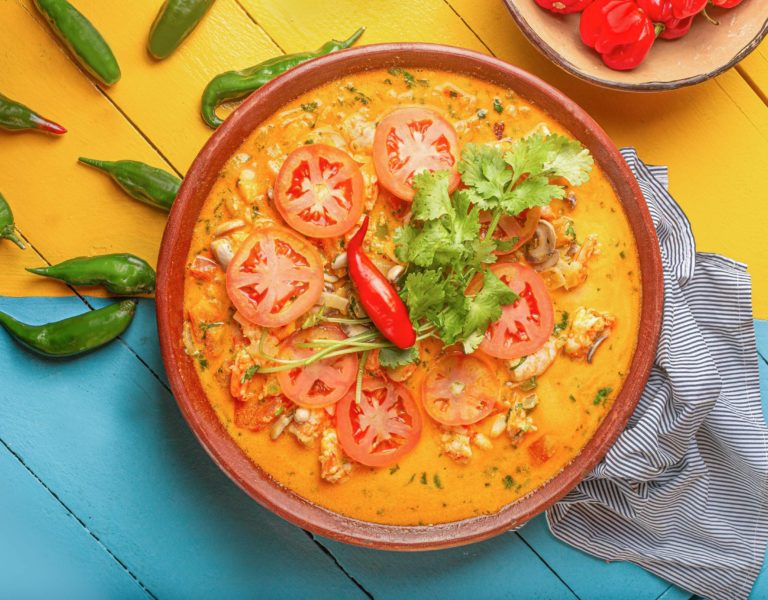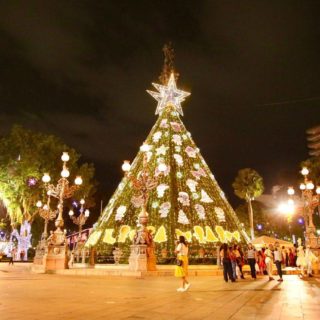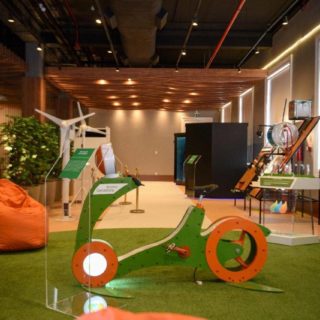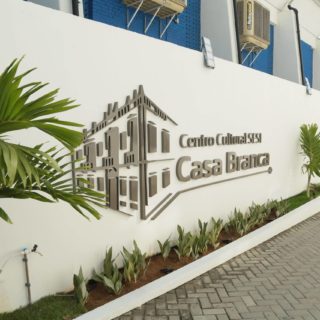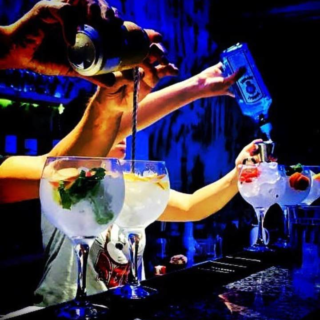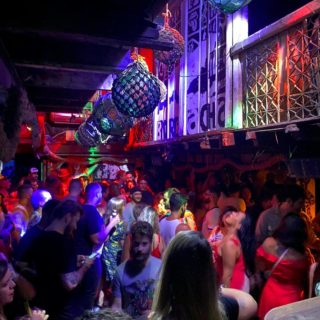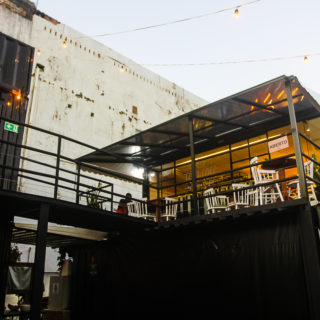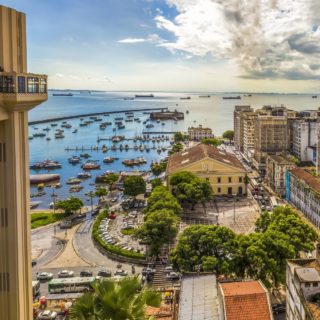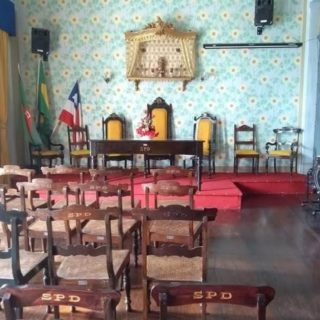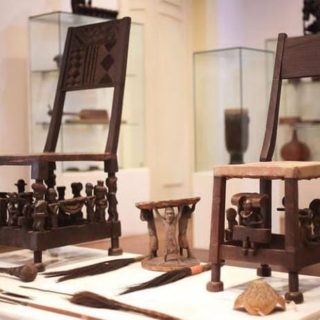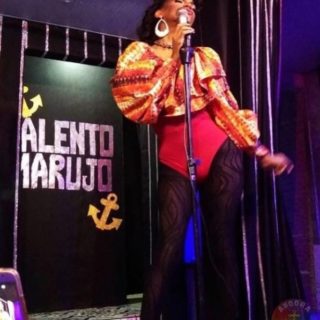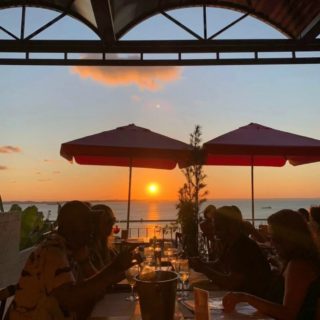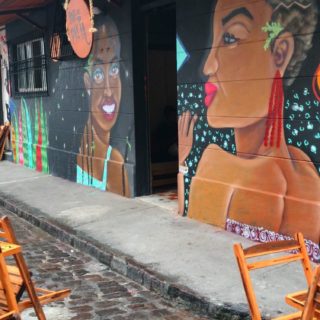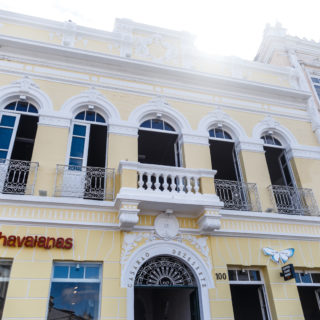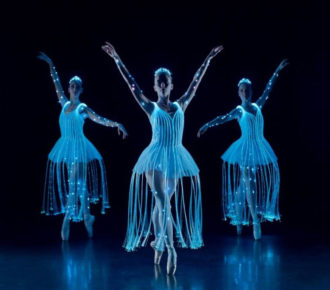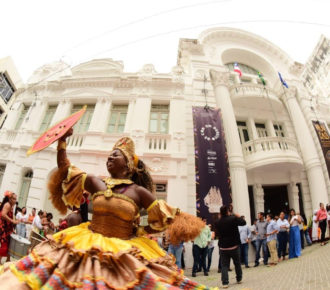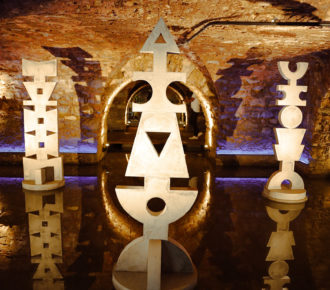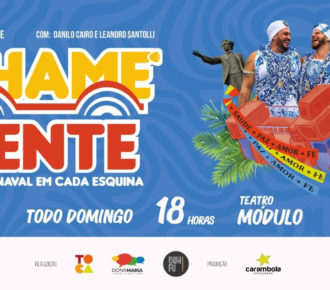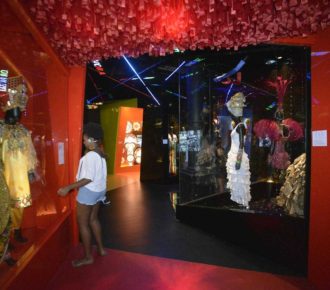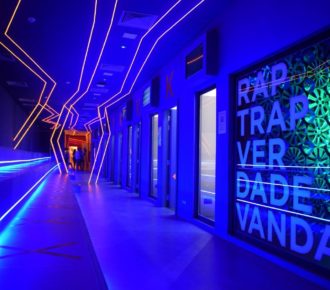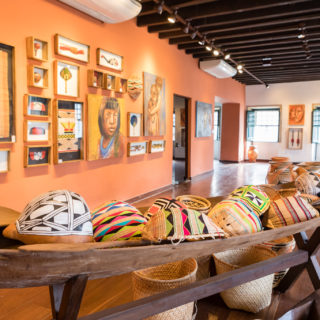
Learn more about this rich dish that, in addition to an unparalleled flavor, brings with it generous hints of ancestry.
Bahian gastronomy is based on memories. A creative and original cuisine, food heritage that has gone through centuries of transformations. The act of passing recipes and methods of preparation from generation to generation is also a way of telling the story of a country. Cooking in the first capital of Brazil has an indescribable load of ancestry.
Moqueca is one of the most famous and traditional dishes in Bahia, rich in flavors and made with local ingredients. It is probably one of the dishes that best represents Afro-Brazilian cuisine. The recipe, which uses fish cut into pieces, tomatoes, onions, peppers, dried coconut, coriander, chives, palm oil, salt and pepper, is, along with acarajé, a connecting cultural agent and practically a tourist attraction in Salvador.
To fully immerse yourself in this universe of flavors and understand the geography of moqueca, the City of Salvador, through the Department of Culture and Tourism (SECULT), prepared a complete immersion, through a special space in the Visit Salvador da Bahia portal. Here, you will find a route of traditional and non-traditional moquecas, to get to know the city through your palate.
Know the history of the moqueca
Bahian moqueca is the result of the influence of the three cultures that formed this land: Portuguese, African and indigenous people. The wonderful book “Cozinhando Histórias – receitas, histórias e mitos de pratos afro-brasileiros” (Cooking stories – recipes, stories and myths of Afro-Brazilian dishes) tells that, in the Tupi language, “moquém” means “drying or roasting the meat”.
In the traditional technique of the indigenous people, the custom was to roast the meat or cook it in its own juice, wrapped in leaves over or under the coals. As the Indians did not use salt, they seasoned meat and fish with herbs, pepper and ash from the embers. From the African custom, came the addition of coconut milk and palm oil, and thus came the moqueca made in a clay pot, which, thanks to the concentrated heat, finishes cooking slowly, already at the table.
The book also tells that the fish dish brought by the Portuguese was modified by the usual ingredients of African cuisine and cooked in clay pots using indigenous techniques. Another contribution of this culinary fusion was pirão, made with moqueca broth and cassava flour.
In the book “Na mesa da baiana. Receitas, histórias, temperos e espírito tipicamente baianos” (On the Baiana’s table. Recipes, stories, spices and typically Bahian spirit), by Tereza Paim and Sonia Robatto, among many recipes and stories, there is an interesting part that says that a typical Bahian moqueca needs to be made in a clay pot from the Recôncavo, molded by hand by the potters, who, after that, burn the piece (which they also call earthenware) in bonfires on the banks of the Paraguaçu River. The authors also tell a curious fact, that the time of burning is decided by nature, as it needs a gentle wind – the wind at the time when the tide is rising and entering the river.
Another relevant piece of information that chef Tereza Paim and writer Sonia Robatto tell in the book is that the Bahian moqueca is also different because it includes coconut milk and palm oil in its traditional recipe. Coconut milk is already an established flavor in Bahian moquecas, but this ingredient only started to be part of the dish from 1940 onwards.
Female power
In Salvador, the Donas do Sabor Festival brought together women chefs and/or who run a restaurant to show their work on the Visit Salvador da Bahia networks. The project aimed to promote the Soteropolitan gastronomic tourist route and attract national and international visitors through the women who dominate one of the most important pillars of the city’s culture: the gastronomy.
Among the stars of the festival, which featured a web series, a culinary show and a digital registration platform, the moqueca, with all its variations, was the dish most chosen as representative of the participating restaurants. The Donas do Sabor web series was no different. Chefs and owners Leila Carreiro, from the Dona Mariquinha restaurant, in Rio Vermelho, and Neinha, from the Neinha Point do Camarão restaurant, in Plataforma, for example, together prepared a shrimp moqueca with maturi (a type of cashew). Watch this and other episodes now at this link.
Knowledge mosaic
It is possible to understand this mosaic of knowledge by going through experiences in the city. Knowing more about the gastronomic universe in which the moqueca is inserted, it is possible to take a journey through the sociocultural construction of Salvador and its influences.
The deep relationships between the kitchens of Bahia and the kitchens of Angola show that, during the crossings of the Atlantic Ocean, many exchanges, interpretations and inventions of recipes took place, both from the African Coast to Brazil, and from Brazil to the African Coast. The Museum of Bahian Gastronomy, an initiative of Senac-Bahia, seeks to value the different food systems of Bahia in historical, cultural, social and gastronomic contexts.
The museum is a pioneer in Brazil and Latin America, and its mission is to inform, value and publicize Bahian food in its most varied contexts, focusing on the heritage look added to the gastronomic look.
Another example is a gastronomic and cultural project that values the African influence of this dish, which is so traditional in Bahia: “Ajeum da Diaspora, uma etnogastronomia afrodiasporica” (Ajeum da Diáspora, an Afrodiasporic ethnogastronomy), by Angélica Moreira. The Bahian activist, cook and author died in July 2022, but she left her legacy in the book “Memórias da Cozinha Ancestral” (Memories of the Ancestral Kitchen), with recipes and stories she experienced.
Conceived by Angélica Moreira in 2013, Ajeum became a reference in Salvador, and regularly operated in the cook and hostess’s own home. The diverse menu was full of recipes loaded with flavors brought from Africa. Another strong point of the project, highlighted by everyone who has known it, is the proposal to share, inherited from African ancestry and applied at the Ajeum table. Angélica talked to us about making the dish at the beginning of 2022:
“As much as we are suffering some gastronomic invasions, there are dishes that really resist and go through time, with the same way of making, and the moqueca is one of them. It really represents us, there’s a way to make it which is ours, a dish that is always made the same way. From the base, you can make moqueca with practically anything you want: chicken, egg, fish, meat, vegan. Moqueca is really our thing: when you think of Bahia , you think of moqueca and acarajé”.
And, straight from a little blue house, on a quiet street in the Rio Vermelho neighborhood, a restaurant manages to represent many ”Bahias”. A bit of the state’s heritage cuisine, a very rich cuisine that goes far beyond palm oil and carries not only African heritage but also Muslim and country. At Dona Mariquita, the dishes are made as they were created, in a rescue of traditional recipes for the preservation of cultural heritage.
Chef Leila Carreiro makes the perfect union of original ingredients in her recipes, such as shellfish from the Bahia Recôncavo region, seeds and leaves, mixing indigenous, African and country influences. According to her: “the moqueca has suffered and still suffers from various influences, totally mischaracterized, like most of our foods (from Bahia). But this is the gastronomy evolution,” she explains.
The city, the gastronomy and its people!
The story of the moqueca is also told through the experience of each person, the handling, the preparation, from the purchase of ingredients, to the dish served at the table. These are the people who follow traditions, and who are also transforming agents of the future.
Maria de São Pedro – Mercado Modelo
Maybe you know the Maria de São Pedro restaurant, in Mercado Modelo, but don’t know its original history. Maria de São Pedro was one of the biggest and most celebrated cooks in Bahia, a forerunner of the art of having a restaurant serving traditional Bahian food. Odorico Tavares, Jorge Amado, Orson Welles, Sartre and Neruda tried her seasoning.
Her old restaurant was a party in front of the Mercado Modelo ramp, which was taken by flames. Jorge Amado described her as “Maria de São Pedro, queen of vatapá and efó, of caruru and abará, of moquecas and xinxins, of palm oil and pepper, queen of delicacy and cordiality.” (Jorge Amado – Bahia de Todos os Santos).
The restaurant, which bears her name, remains in Mercado Modelo, now managed by her family.
Tia Maria – Pedra Furada
Recanto da Tia Maria is a very simple and welcoming place, and the one who welcomes you there is Tia Maria herself. She and her daughter have been running the restaurant for years. Newspaper clippings and headlines about the restaurant on the walls give a hint that the moqueca is famous there. The octopus moqueca with shrimp comes with rice, pirão, butter farofa and pepper. The restaurant does not have a fixed menu and is subject to capacity. Better calling ahead: (71) 3312-1746, or (71) 98383-4331.
Donana – Brotas
The culinary art of Ana Raimunda Silva Santos, Donana, became a main breadwinner in 1988, when the then nursing assistant at Maternity Hospital of Brotas opened a haberdashery in the Centro Comercial dos Comerciários (Shopkeepers Shopping Center), to supplement her household income. Business did not go so well and, to support the point, she started selling some sweets. From then on, things changed, the debts were paid at the end of the month and the haberdashery became a restaurant.
Nowadays, if you don’t arrive early, you will find a line at the door. Even after these more than 30 years with the restaurant being a success in the city, the habits are still the same: Dona Ana Raimunda runs the kitchen alongside assistants Adriana (her daughter) and Lúcia, she personally picks the ingredients, arranges the décor and supervises the service. The shrimp moqueca is the flagship, and comes with some side dishes, among which we suggest the pirão or vatapá, which are fabulous.
Emilene Bomfim, Boca de Galinha – Plataforma
It was in a wooden shack on the edge of the beach, where the fishermen used to lean the nets, in the neighborhood of Plataforma, that the Boca de Galinha restaurant was born. They then moved to the address where the restaurant is located today and gradually expanded. And, on this journey, they became one of the most beloved establishments in the city of Salvador.
And there goes more than 30 years serving delicious food, facing the Itapagipe Bay. “The taste for cooking was passed on from mother to daughter. It passed from my grandmother to my mother and from my mother to me”, explains Emilene Bomfim, owner and chef of the restaurant. There, the best Bahia cuisine is served. The flagship are the moquecas, among which you can choose eight types per day such as: Seafood, Shrimp with lobster, Shrimp, Beijupirá, Dourado, Vermelho, Caçonete and Stingray.
Non-traditional moquecas
And, as you could already notice, it’s not just the traditional fish moqueca that’s popular in the city. We have gathered here other good options to discover new flavors in creative compositions and mixtures of ingredients.
Aratu moqueca with green papaya, by Joelia Ramos Bruno Cova, Dona Jô.
Cantinho da Jô Restaurant. Instagram: @cantdajo. Address: Vila Brandão, slope of Ladeira da Barra, entrance through Largo da Graça. Phone: 71 99103-6024.
Stingray moqueca, by Dona Suzana
Re-Restaurant Dona Suzana (@donasuzanarerestaurante). Location: Solar do Unhão Community. Contact: 71 3328 2056 – Only by scheduling.
Meat moqueca with shrimp, egg, peppers and a lot of palm oil. Served with rice, pirão and farofa d’água.
Porto do Moreira Restaurant. Carlos Gomes Street, 488 – Dois de Julho, Salvador – BA, 40060-330. Phone: (71) 3322-2814
Vegan moqueca, made with plantain
Rango Vegan. Passo Street, 62 – Santo Antônio, Salvador – BA, 40301-408. Instagram: @rangovegan.ssa. Contact: 71 3488 2756 | 993872427. Owner/Chef: Carol Reis 71 99367-0272.
Eggs Moqueca
Yemanjá Restaurant. Octavio Mangabeira Ave, 3900, Salvador, Bahia 41750-971. Contact: 71 3461-9010.
Poqueca – moqueca roasted in banana leaves with milk acaçá.
Dona Mariquita Restaurant – Bahia Heritage Cuisine. Phone: (71) 3334 6947/ Leila Carreiro (owner/chef): 71 99118-3001. www.donamariquita.com.br.
Purchasing ingredients and utensils
A superficial analysis of what we call the “Geography of Moqueca” shows that the main ingredients used, such as olive oil, come from the south region of Salvador, commonly known as “Costa do Dendê”. Other ingredients and clay pots come from the Recôncavo Baiano and are sold in traditional and popular markets and fairs in the city.
In the Lower City, between the All Saints Bay and Oscar Pontes Avenue, São Joaquim Market is large in scope and history. Its corridors form a large maze, where visitors can take a deep dive, without filters or clippings, into the soul of Bahian culture.
The fish is caught in the bay or in the Atlantic Ocean in front of Salvador and sold by fishermen in popular markets in the city and markets close to the Old Town, such as the Popular Market of Ladeira da Água Brusca. Discover these and other fairs in the city:
São Joaquim Market:
Eng. Oscar Pontes Ave, no number | Água de Meninos, Comércio
Opening hours: every day, from 5 am to 5 pm
More information in this link.
Sete Portas Market:
José Joaquim Seabra Ave, no number, Sete Portas
Daily from 7 am on
Itapuã Market
Feira de Itapuã Supply Center (Dorival Caymmi Avenue, 05):
Opening hours: Monday to Saturday (5am to 6pm) and Sunday (5am to 2pm).
The neighborhood also has the Feira Antiga (Antique Fair), located on Genebaldo Figueredo Street, where the Municipal Market of Itapuã operates.
Popular Market of Ladeira da Água Brusca
Jequitaia Avenue, 207 – Água de Meninos, Salvador – BA, 40460-001
Opening hours: Tuesday to Saturday, from 5 am to 2 pm. On Sunday, it closes earlier, at noon. On Monday it doesn’t open.
Fishermen colonies
Urban fishing colonies have men and women who fish and sail to keep the source of income and the tradition alive. In the State of Bahia, fishing is mostly artisanal and/or subsistence, exploring environments close to the coast. The colonies are scattered along the entire coast of the city, from the central ones (Itapuã, Rio Vermelho, Plataforma and Paripe) to the other associations (such as Boca do Rio and São João do Cabrito), passing through the railway suburb (headquarters in Paripe), Itapagipe (headquarters in Plataforma) and Ilha de Maré, a rural black community, whose population is made up of remnants of quilombos, many of whom live from fishing:
Itapuã – Z06
Rio vermelho – Z01
Itapagipe – Z02
Bom Jesus dos Passos – Z03
Ilha de Maré – Z04
More information at this link.
“Marisqueiras” (Shellfish gatherers – only women)
On the outskirts of Salvador, there is a family tradition of shellfish gatherers from Plataforma. Another shellfishing region is in Praia Grande, on Ilha de Maré. The activity, which is a source of income and food in these places, is a cultural heritage, which has generated income for decades.

